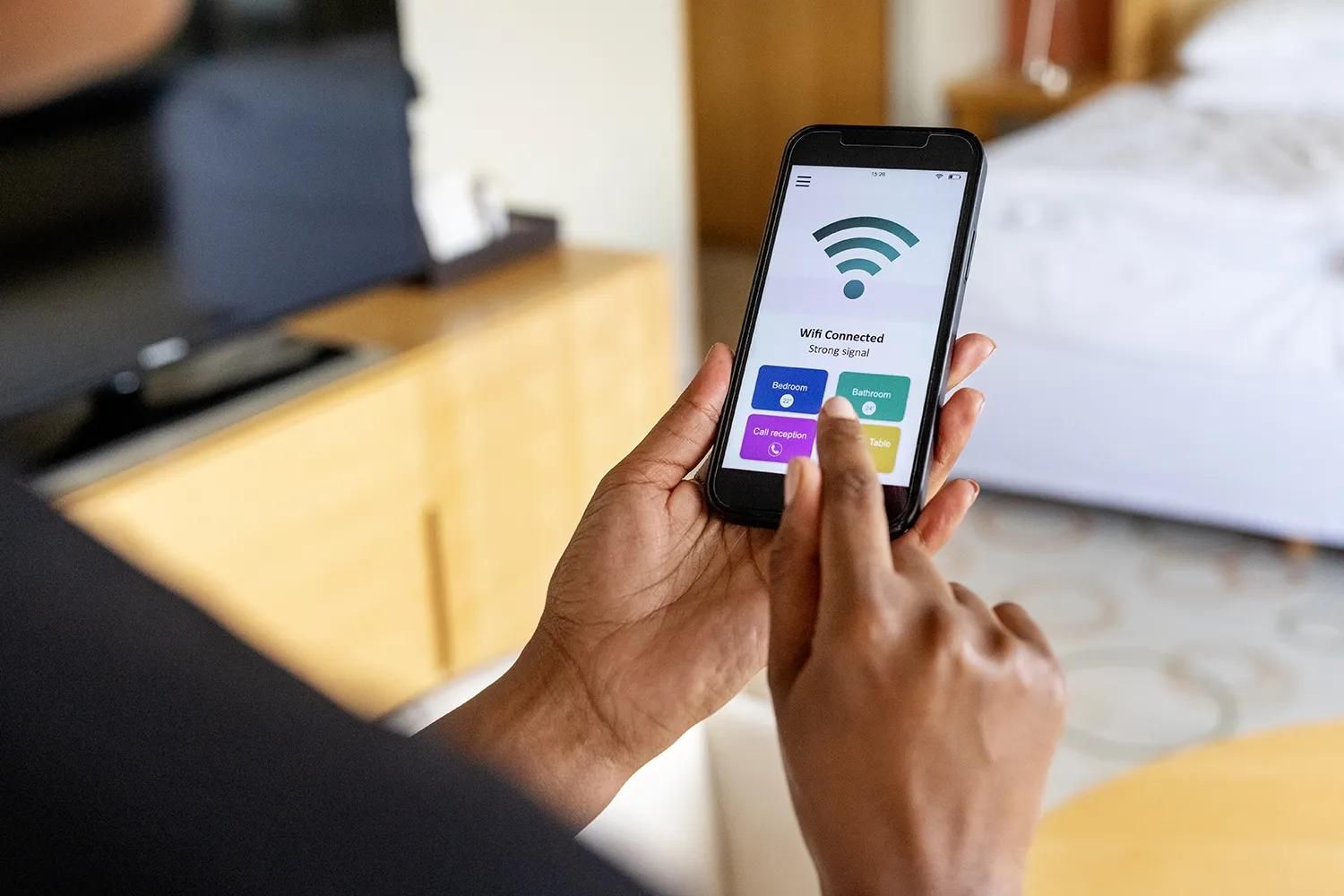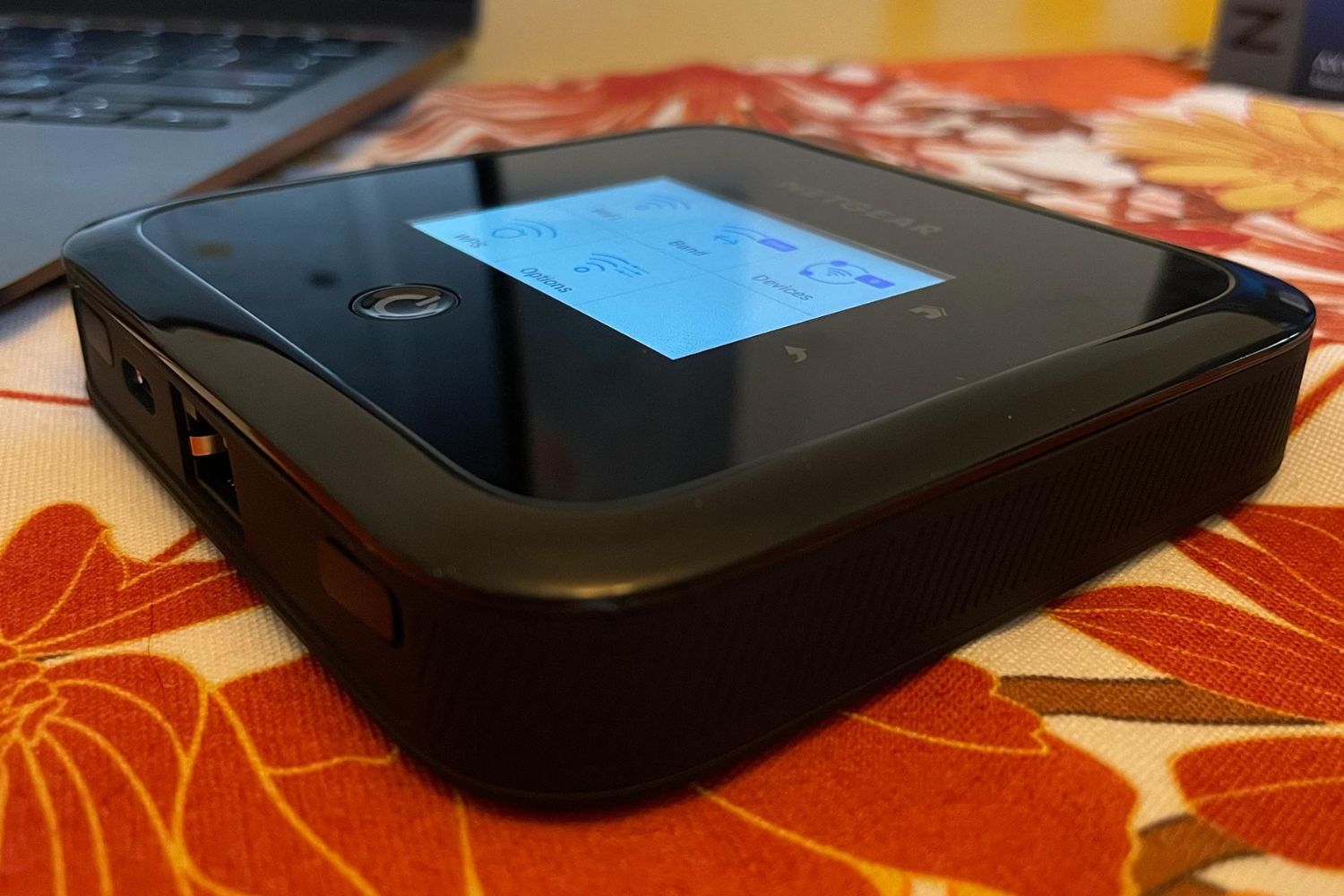Coverage and Network Compatibility
When selecting a mobile hotspot, one of the foremost considerations is its coverage and network compatibility. This pivotal factor determines the reliability and effectiveness of the device in keeping you connected while on the go. Here's a closer look at the crucial aspects to ponder:
-
Network Coverage: The availability and strength of network coverage play a pivotal role in ensuring a seamless and uninterrupted connectivity experience. Prior to making a decision, it's essential to research and comprehend the coverage maps offered by various service providers. This will enable you to ascertain the areas where the network signal is robust and where it may be spotty, aiding in the selection of a mobile hotspot that aligns with your travel and work requirements.
-
Network Compatibility: Equally vital is the compatibility of the mobile hotspot with different network technologies. The device should support prevalent network standards such as 4G LTE, which ensures faster data speeds and enhanced reliability. Furthermore, compatibility with emerging technologies like 5G can be a significant advantage, especially for individuals seeking future-proof solutions.
-
Roaming Agreements: For individuals who frequently travel internationally, understanding the mobile hotspot's roaming capabilities is imperative. Investigating the provider's roaming agreements and associated costs can prevent unexpected charges and connectivity issues when venturing beyond domestic borders.
By meticulously evaluating the coverage and network compatibility of a mobile hotspot, users can make an informed decision that aligns with their connectivity needs, ensuring a reliable and consistent internet connection regardless of their location.
Data Speed and Performance
The data speed and performance of a mobile hotspot are pivotal factors that directly impact the user experience. When considering a mobile hotspot, it's essential to delve into the intricacies of data speed and performance to ensure that it meets your connectivity requirements. Here's a comprehensive exploration of the key elements within this domain:
Data Speed
The data speed of a mobile hotspot is a critical determinant of its usability and effectiveness. It directly influences the efficiency of tasks such as streaming, video conferencing, and large file downloads. When evaluating data speed, it's crucial to consider the advertised maximum speed offered by the service provider. However, real-world performance can vary based on several factors, including network congestion, signal strength, and the number of connected devices.
Performance in High-Traffic Areas
In bustling urban environments or crowded event venues, network congestion can significantly impact the performance of a mobile hotspot. Understanding how a device handles high-traffic scenarios is vital for individuals who frequently find themselves in such settings. Some providers offer features like prioritized data access for hotspot devices, which can enhance performance in congested areas.
Latency and Ping Rates
Beyond raw data speed, latency and ping rates play a pivotal role in determining the responsiveness of a network. Low latency and ping rates are crucial for activities such as online gaming, video calls, and remote desktop access. Evaluating these metrics can provide insights into the overall performance of a mobile hotspot, especially for users with specific latency-sensitive requirements.
Signal Strength and Consistency
The strength and consistency of the network signal directly impact the data speed and overall performance of a mobile hotspot. Devices with advanced antenna technology or signal-enhancing features can offer more reliable connectivity, especially in areas with weaker network coverage.
Real-World Testing and Reviews
While advertised specifications provide a baseline understanding of a mobile hotspot's data speed and performance, real-world testing and user reviews offer valuable insights into its actual capabilities. Engaging with user experiences and professional reviews can provide a comprehensive understanding of how a device performs in diverse scenarios and environments.
By meticulously evaluating the data speed and performance aspects of a mobile hotspot, users can make informed decisions that align with their connectivity requirements, ensuring a seamless and efficient internet experience regardless of their location or usage demands.
Device Compatibility and Simultaneous Connections
When evaluating a mobile hotspot, assessing its device compatibility and the ability to support simultaneous connections is paramount. These factors directly influence the convenience and flexibility of using the device across a spectrum of scenarios. Here's an in-depth exploration of these critical aspects:
Device Compatibility
The compatibility of a mobile hotspot with various devices, including smartphones, tablets, laptops, and IoT gadgets, is a pivotal consideration. A device that supports a wide array of operating systems and connectivity protocols ensures seamless integration with your existing tech ecosystem. Compatibility with both iOS and Android platforms, as well as Windows and macOS, can enhance the versatility and usability of the mobile hotspot, catering to a broad range of users.
Furthermore, the ability to connect via Wi-Fi, USB, or Ethernet provides added flexibility, allowing users to leverage the mobile hotspot with diverse devices, even those without built-in Wi-Fi capabilities. This versatility is particularly beneficial for individuals who rely on a spectrum of gadgets for work, entertainment, and communication.
Simultaneous Connections
The capability of a mobile hotspot to support multiple simultaneous connections is a pivotal consideration for users who need to keep multiple devices connected at once. Whether it's for a team collaboration, family road trip, or a classroom setting, the ability to connect several devices concurrently can significantly enhance the utility of the mobile hotspot.
Understanding the maximum number of supported connections and the impact on data speeds when multiple devices are connected is crucial. Some devices may support a higher number of simultaneous connections but experience a notable reduction in data speed as more devices join the network. Evaluating how the device manages bandwidth allocation and maintains performance across simultaneous connections is essential for users seeking a seamless and reliable connectivity experience.
Moreover, features such as guest networks and device prioritization can further enhance the usability of a mobile hotspot in scenarios where multiple users or devices require connectivity. The ability to allocate bandwidth efficiently, prioritize critical tasks, and manage connected devices seamlessly can elevate the overall user experience, making the mobile hotspot an indispensable tool for various personal and professional endeavors.
By meticulously evaluating device compatibility and the ability to support simultaneous connections, users can select a mobile hotspot that seamlessly integrates with their tech ecosystem while providing the flexibility and convenience to keep multiple devices connected, ensuring a reliable and efficient connectivity experience in diverse scenarios.
Battery Life and Portability
The battery life and portability of a mobile hotspot are pivotal considerations that directly impact its usability and convenience, especially for individuals who are constantly on the move. Here's a detailed exploration of these critical aspects:
Battery Life
The battery life of a mobile hotspot is a key determinant of its practicality and reliability. A device with an extended battery life can provide uninterrupted connectivity during extended travel, outdoor activities, or work engagements where access to power sources may be limited. When evaluating battery life, it's essential to consider the advertised battery capacity and the estimated duration of continuous usage provided by the manufacturer. Real-world testing and user experiences can offer valuable insights into the actual battery performance, especially in scenarios involving continuous usage or varied network conditions.
Moreover, the presence of power-saving features, such as automatic sleep modes and customizable power management settings, can further enhance the device's efficiency, prolonging its operational duration on a single charge. For frequent travelers or individuals engaged in outdoor pursuits, a mobile hotspot with a robust battery life can be a game-changer, providing consistent connectivity without the need for frequent recharging.
Portability
The portability of a mobile hotspot significantly influences its practicality and user experience. A compact, lightweight design facilitates effortless carrying, allowing users to stay connected while on the move without being encumbered by bulky or cumbersome devices. Additionally, factors such as the device's form factor, weight, and durability play a crucial role in determining its suitability for diverse environments and usage scenarios.
Devices with sleek, pocket-sized designs or rugged, impact-resistant exteriors offer enhanced versatility, catering to individuals with diverse mobility requirements. Furthermore, the inclusion of features such as integrated device stands, mounting options, or lanyard attachments can further augment the device's portability, enabling users to deploy it in various settings with ease.
The seamless integration of portability and robust battery life transforms a mobile hotspot into a reliable companion for remote work, travel adventures, outdoor excursions, and on-the-go connectivity needs. By prioritizing these attributes, users can select a mobile hotspot that aligns with their lifestyle and usage patterns, ensuring consistent and hassle-free connectivity wherever their endeavors take them.
In essence, the battery life and portability of a mobile hotspot are pivotal factors that warrant meticulous consideration, allowing users to make informed decisions and select a device that seamlessly integrates into their dynamic and mobile-centric lifestyles.
Cost and Data Plans
Cost and data plans are pivotal considerations when selecting a mobile hotspot, as they directly impact the overall affordability and utility of the device. Understanding the cost structure and available data plans empowers users to make informed decisions aligned with their budgetary constraints and connectivity requirements.
Upfront Cost
The upfront cost of a mobile hotspot encompasses the price of the device itself. It's essential to evaluate the initial investment required to acquire the hotspot, considering factors such as device features, brand reputation, and included accessories. While some devices may have a higher initial cost, they may offer advanced features, better build quality, and superior performance, justifying the investment for users with specific needs or usage demands.
Data Plans and Pricing Tiers
The availability of diverse data plans and pricing tiers provides users with the flexibility to select a plan that aligns with their data consumption patterns and budgetary considerations. Service providers typically offer a spectrum of plans, including pay-as-you-go options, monthly subscriptions, and tiered data packages. Evaluating the data allowances, speed throttling thresholds, and overage charges associated with each plan is crucial for identifying a cost-effective and suitable option.
Contractual Obligations and Flexibility
Some service providers may require contractual commitments for specific data plans, offering discounted rates or subsidized device pricing in return. Understanding the terms and conditions of such contracts, including early termination fees and contract durations, is essential for users evaluating long-term connectivity solutions. Conversely, flexible, no-contract options provide users with the freedom to adjust their data plans or switch providers without being bound by extended commitments.
Additional Costs and Hidden Fees
In addition to the base cost of data plans, users should be mindful of potential additional costs and hidden fees associated with the use of a mobile hotspot. These may include activation fees, equipment rental charges, administrative fees, and taxes. A comprehensive understanding of the total cost of ownership, inclusive of all potential fees, ensures that users can accurately assess the financial implications of integrating a mobile hotspot into their connectivity arsenal.
Value-Added Features and Incentives
Some data plans may include value-added features and incentives, such as complimentary access to premium content services, device insurance, or loyalty rewards. Evaluating the supplementary benefits offered alongside data plans can enhance the overall value proposition, providing users with additional perks and enhancing the cost-effectiveness of their chosen plan.
In essence, a thorough evaluation of cost and data plans empowers users to select a mobile hotspot and data package that aligns with their budgetary constraints, connectivity requirements, and long-term usage objectives. By carefully considering the upfront cost, available data plans, contractual obligations, potential additional fees, and value-added features, users can make informed decisions that optimize the affordability and utility of their chosen mobile hotspot solution.
Additional Features and Security Measures
In addition to fundamental connectivity capabilities, the inclusion of advanced features and robust security measures can elevate the utility and reliability of a mobile hotspot. When assessing potential options, it's essential to delve into the diverse array of additional features and security measures to ensure a comprehensive understanding of the device's value proposition and safeguarding capabilities.
Advanced Features
Dual-Band Wi-Fi Support
Mobile hotspots equipped with dual-band Wi-Fi support offer enhanced versatility and performance. By operating on both 2.4 GHz and 5 GHz frequency bands, these devices can optimize connectivity based on the surrounding network conditions, mitigating interference and congestion for a more stable and efficient user experience.
Touchscreen Interface
Some modern mobile hotspots feature intuitive touchscreen interfaces, providing users with seamless navigation, device management, and detailed usage insights. The integration of a touchscreen interface enhances the device's usability, allowing for convenient configuration adjustments and real-time monitoring of network status.
External Antenna Ports
Devices with external antenna ports enable users to enhance signal reception and coverage by connecting external antennas. This feature is particularly beneficial for individuals operating in remote or challenging environments, where maximizing signal strength is crucial for maintaining reliable connectivity.
Integrated Storage and File Sharing
Certain mobile hotspots incorporate built-in storage capabilities and file sharing functionalities. This enables users to share files, media, and documents across connected devices, transforming the device into a multifunctional hub for collaborative work, content distribution, and seamless data exchange.
Security Measures
WPA3 Encryption
The implementation of WPA3 encryption protocols fortifies the security of a mobile hotspot, safeguarding data transmission and network access. WPA3 offers advanced protection against unauthorized access and exploits, ensuring that sensitive information remains secure during wireless communications.
VPN Passthrough Support
Mobile hotspots that support VPN passthrough facilitate secure access to virtual private networks, enabling users to establish encrypted connections for enhanced privacy and data protection. This feature is particularly valuable for individuals seeking to safeguard their online activities and sensitive information while utilizing public or unsecured networks.
Device Whitelisting and MAC Filtering
The ability to configure device whitelists and employ MAC filtering empowers users to control which devices can access the mobile hotspot's network. This granular control enhances network security by restricting unauthorized device connections, minimizing the risk of intrusion and unauthorized access attempts.
Intrusion Detection and Prevention
Some advanced mobile hotspots integrate intrusion detection and prevention mechanisms, which actively monitor network traffic for suspicious activities and potential security breaches. By proactively identifying and mitigating potential threats, these devices bolster the overall security posture, providing users with heightened peace of mind.
By thoroughly evaluating the additional features and security measures offered by different mobile hotspot options, users can make informed decisions that align with their specific connectivity needs and security preferences. The integration of advanced features and robust security measures not only enhances the device's utility but also ensures a resilient and protected connectivity experience, catering to both personal and professional usage scenarios.

























